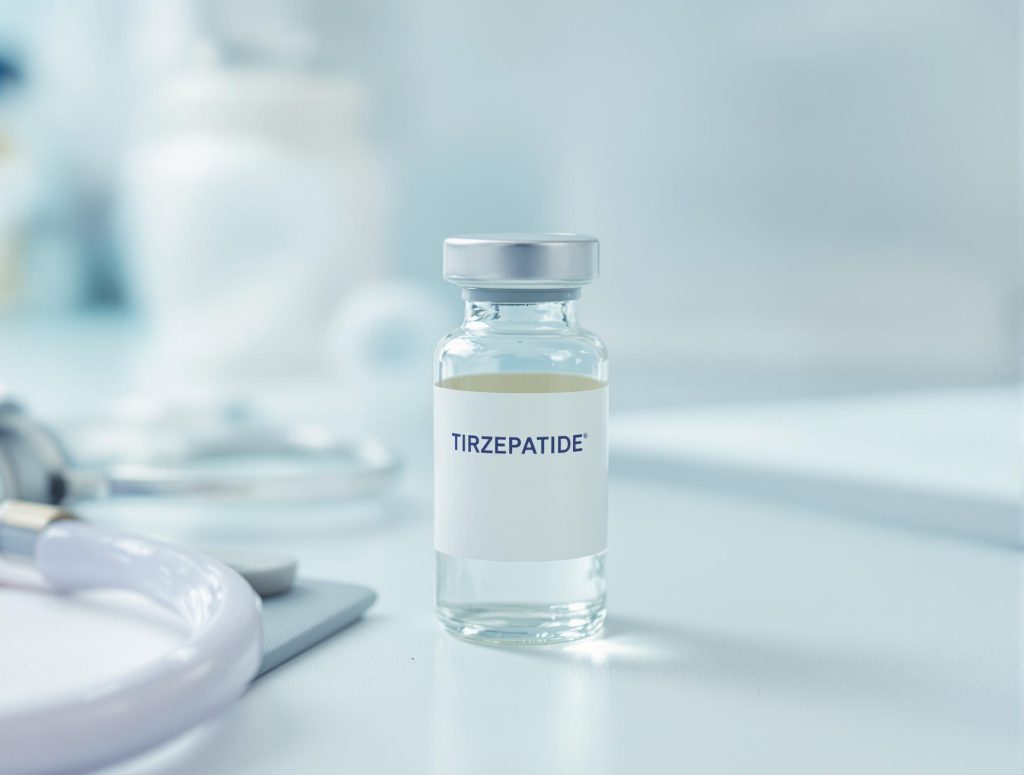The Difference Between Semaglutide and Tirzepatide: Which Is Better for Weight Loss?

Key Takeaways
- Both tirzepatide and semaglutide are effective medications for weight loss, but they work differently and offer distinct benefits.
- Tirzepatide tends to result in greater weight loss, due to its dual action on GLP-1 and GIP receptors.
- Semaglutide has a proven safety profile and is more affordable for some patients.
When it comes to managing weight, several medications have emerged as game changers, with tirzepatide and semaglutide leading the charge. These two medications have gained attention for their ability to support significant weight loss in individuals with obesity and related conditions like type 2 diabetes. Both belong to a class of drugs known as GLP-1 receptor agonists (and tirzepatide is a dual GIP/GLP-1 receptor agonist), which work by targeting the hormones involved in appetite regulation and glucose control. It brings up the question: what is the difference between semaglutide and tirzepatide?
Understanding Tirzepatide and Semaglutide for Weight Loss
Semaglutide and tirzepatide help individuals manage weight, but they have slightly different mechanisms of action.

Semaglutide is a GLP-1 receptor agonist. It mimics the action of the GLP-1 hormone, which helps regulate appetite, promotes satiety, and enhances insulin sensitivity. By stimulating the GLP-1 receptors in the brain, semaglutide reduces feelings of hunger, leading to decreased calorie intake. It also slows gastric emptying, further enhancing feelings of fullness.
Tirzepatide, on the other hand, is a dual GIP/GLP-1 receptor agonist, which targets both GLP-1 and GIP (gastric inhibitory polypeptide) receptors. While GLP-1 controls appetite and blood sugar, GIP plays a role in insulin secretion and fat metabolism. By acting on both receptors, tirzepatide has a broader impact on controlling appetite and regulating blood sugar levels, potentially offering a more powerful weight loss solution than semaglutide alone.
Both medications reduce appetite, increase feelings of fullness, and improve insulin sensitivity, but tirzepatide’s dual action may give it an edge in certain patients.
Effectiveness in Weight Loss: What is the Difference Between Semaglutide and Tirzepatide?
Regarding weight loss, clinical trial results show that both tirzepatide and semaglutide have led to substantial reductions in body weight, but tirzepatide has consistently outperformed semaglutide in some studies.
In a study, patients taking semaglutide for weight loss have experienced a significant reduction in body weight, averaging around 5.9% of their total body weight over 12 weeks. This makes it one of the most effective medications available for obesity management, especially for those struggling to lose weight through diet and exercise alone.
Tirzepatide has shown even more impressive results. In a clinical trial, individuals using tirzepatide achieved an average weight loss of 21% of their total body weight over 72 weeks. The dual action on GLP-1 and GIP receptors offers stronger control over appetite and fat metabolism, leading to greater weight loss than semaglutide.
However, the effectiveness of both medications depends on factors such as adherence to the regimen, dosing, and individual variability in response to the drug.
Side Effects Comparison
As with any medication, there are side effects to be aware of when taking tirzepatide or semaglutide. While both drugs are generally well tolerated, they can cause similar side effects, primarily related to the gastrointestinal (GI) system.
Common Side Effects:
- Gastrointestinal issues such as nausea, vomiting, diarrhea, and constipation are commonly reported for both drugs. These side effects improve over time as the body adjusts to the medication.
- Injection site reactions, like redness or swelling, may occur in some users.
Notable Differences:
- Patients tend to report FEWER side effects with tirzepatide, not more.
- Both medications can cause low blood sugar (hypoglycemia), particularly if combined with other glucose-lowering medications, but this risk is generally low when used alone.
Management of Side Effects: Consulting your healthcare provider about these side effects, adjusting the dosage, or trying other medications may help minimize discomfort and maximize treatment benefits.
Long-Term Benefits and Safety
Both tirzepatide and semaglutide have shown promising long-term safety profiles, but as with any new medication, ongoing research is critical to understand their long-term impacts fully.
Current Research on Long-Term Effects:
- Semaglutide has been used for several years and has a well-established safety record, with research showing it can effectively manage weight and improve metabolic health over the long term.
- Tirzepatide is newer, but early research suggests it also has favorable long-term weight management and insulin control outcomes. However, monitoring potential long-term health risks will be important as more data becomes available.

Safety Considerations:
Both drugs are generally considered safe for long-term use under medical supervision. However, ongoing monitoring for adverse effects like gastrointestinal issues, changes in kidney function, or signs of pancreatitis is recommended, especially with extended use.
Making the Right Choice: Key Considerations
Choosing between tirzepatide and semaglutide depends on several factors that should be discussed with a healthcare provider. Consider these key points:
Key Factors to Consider:
- Weight Loss Goals: If maximum weight loss is the primary goal, tirzepatide may offer greater results, but semaglutide still significantly reduces weight.
- Side Effects and Tolerability: Consider which medication’s side effects are more manageable, especially regarding gastrointestinal discomfort.
- Cost and Accessibility: Factor in the cost and insurance coverage, as tirzepatide may be more expensive for some individuals.
Tirzepatide or Semaglutide for Weight Loss?
Both tirzepatide and semaglutide are effective weight-loss medications with distinct advantages. Tirzepatide may offer superior weight loss results due to its dual action on GLP-1 and GIP receptors, but semaglutide has a longer track record of proven effectiveness and safety.
Ultimately, your best choice depends on your health goals, how your body reacts to the medication, your budget, and other factors like side effects and tolerability. By working closely with your healthcare provider, you can make an informed decision that aligns with your needs and supports your weight loss journey.
At Mobile Care Health, we offer Tirzepatide and semaglutide as part of our comprehensive weight management programs tailored to your unique needs. Our experienced healthcare providers will work with you to assess your goals, health history, and preferences to recommend the most suitable treatment option.
Take the first step toward achieving your weight loss goals by scheduling a consultation with us today. Together, we’ll explore the options, address your concerns, and create a personalized plan to help you reach your ideal weight safely and effectively.
Start your journey to better health with Mobile Care Health—your partner in weight management success.





